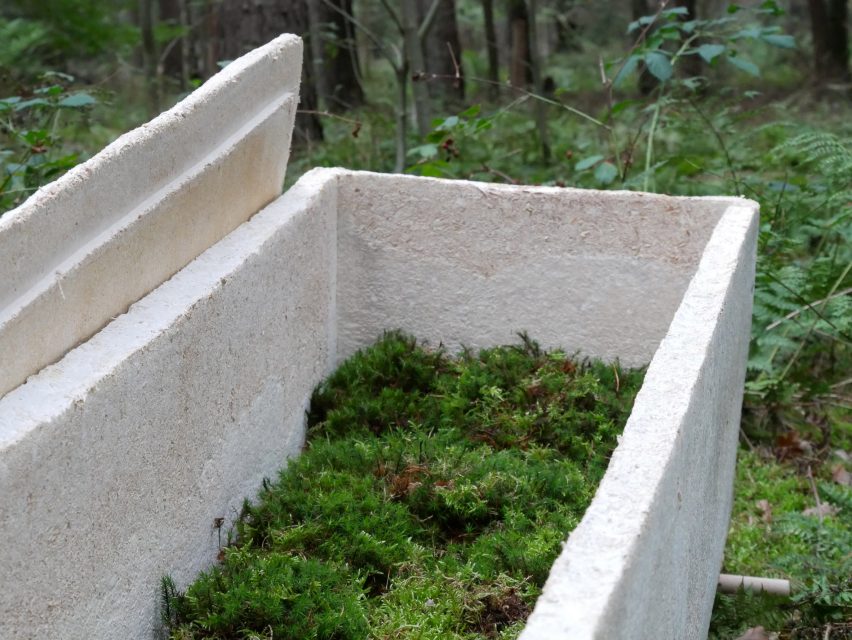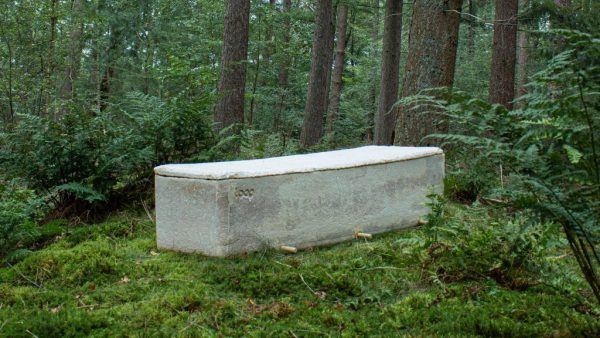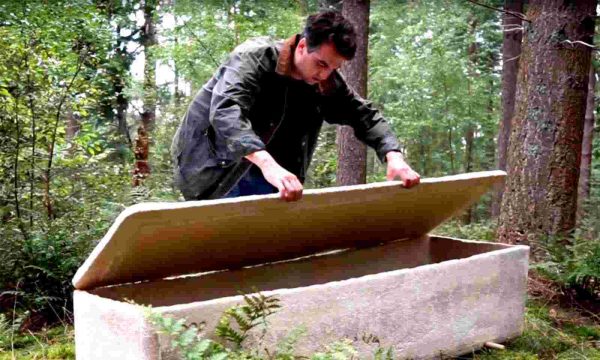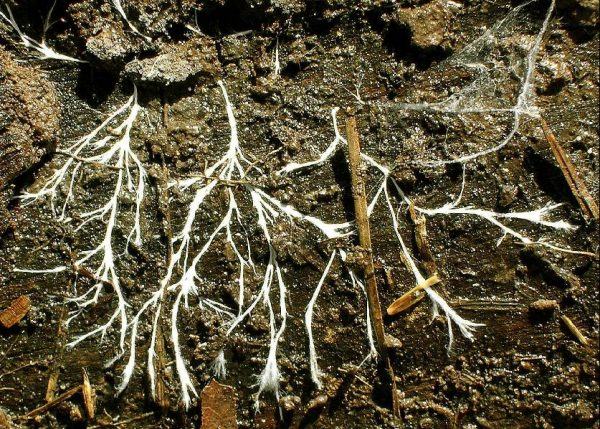Return To Nature in a Living Coffin

In the olden days when a person died, they were put into a wooden coffin and buried in the ground. Now there are many different ways to inter someone.
Some have their bodies cremated, some have their cremains sent into space, some have cremains pressed into a diamond while others have their cremains pressed into a vinyl record. The newest way is to have one’s body buried in a living cocoon made of mushroom mycelium.
Bob Hendrikx of TU Delft, a company from the Netherlands, has created a living coffin called Loop which biodegrades in about a month to a month and one half and it degrades the body inside along with it rather than the ten to twenty years it takes a body to degrade in a traditional coffin.

Not only that, traditional coffins are usually buried in a vault which may never break down. After extensive research into materials and talking with funeral directors Hendrikx decided on mycelium as it is a natural substance that grows within the root structures of trees and plants.
It will eliminate toxins in the ground and make a perfect environment for feeding new plants.
According to their website, loop-of-life.com, mycelium is an underground network of mushrooms which converts organic materials into food for plants. It is the same network that produces fairy rings. The coffins are grown in a mold filled with wood chips.
It takes seven days to grow into a coffin after which it is dried. It will continue to grow once it is exposed to groundwater; become part of nature again and clean the soil around it including toxins of micro plastic and metals that are found in the modern human body.

Soon, there is an area ripe for new plants to grow. Some have shown concern that such a coffin wouldn’t be very strong but because of the way it is grown in wood chips and dried, it will easily support almost five hundred pounds.
While the coffin decomposes in four to six weeks the human body takes about three years in the Loop. There is a layer of soft moss in the Loop that contributes to decomposition of the body.
The Loop coffin is available in Europe and the United States for almost two thousand dollars without shipping costs and can be pre-ordered. The prices for traditional caskets run about the same unless one wants copper or mahogany which can run into as much as ten thousand dollars.
The first one hundred Loops are being grown now and can either be picked up in the Netherlands or at a satellite shop in California or they can be shipped.

It is also possible to buy a voucher which can be held onto until it is needed. The coffins can be stored as well. TU Delft has successfully stored one for six months and other products grown in the same manner have lasted well into four years in storage as long as the location is dry.
Unfortunately, many cemeteries in the United States require at least half of a vault in order to keep the grave from constantly sinking. Vaults are usually made of concrete but some are made from plastic or metal and claim to be waterproof but it’s hard to verify that.
They can cost between nine hundred dollars all the way up to fifteen thousand dollars. Whether or not the vault is required is up to each individual state as well as the owners of the cemetery. If placed in a full vault it would defeat the purpose of the Loop as it would not decompose.

Mycelium is now used for many purposes including packing materials to replace styrofoam, organic plastics, faux leather jackets, handbags, shoes and even artwork.
According to matmatch.com, a pavilion created in the Netherlands for Dutch Design Week used mycelium panels on a wood frame and sealed it with an organic solution originally created by the Incas.
Another Article From Us: Ice Age Mining Camp Found ‘frozen in time’ in Underwater Cave
One can buy their own DIY kit and grow their own materials from Ecovative Design based in Green Island, New York who has partnered with multi national companies such as Dell, Ikea and Biomason.
